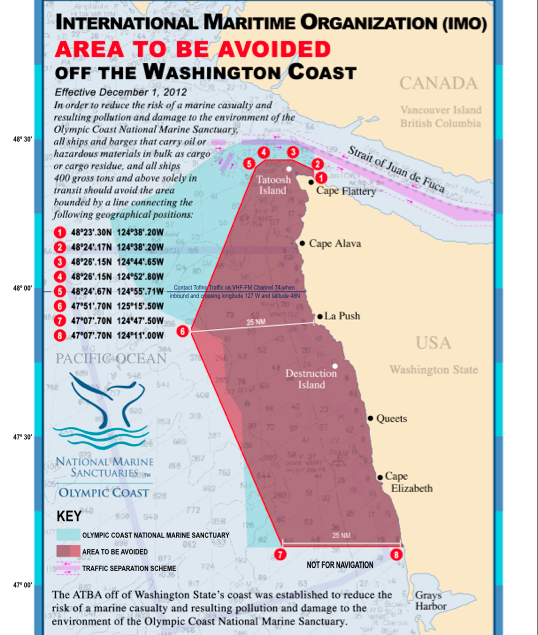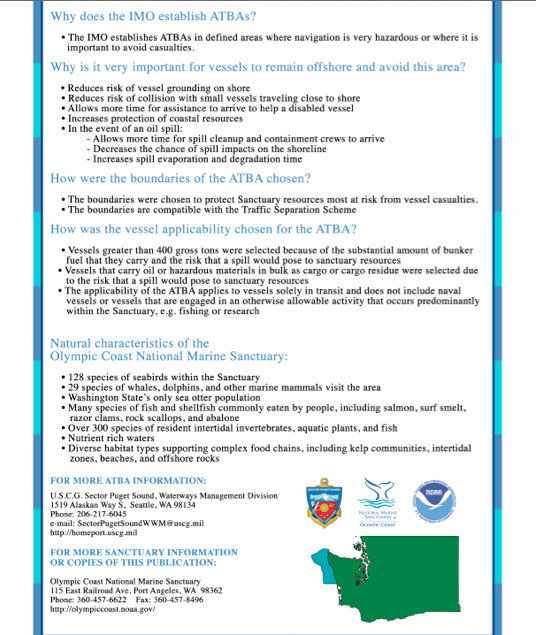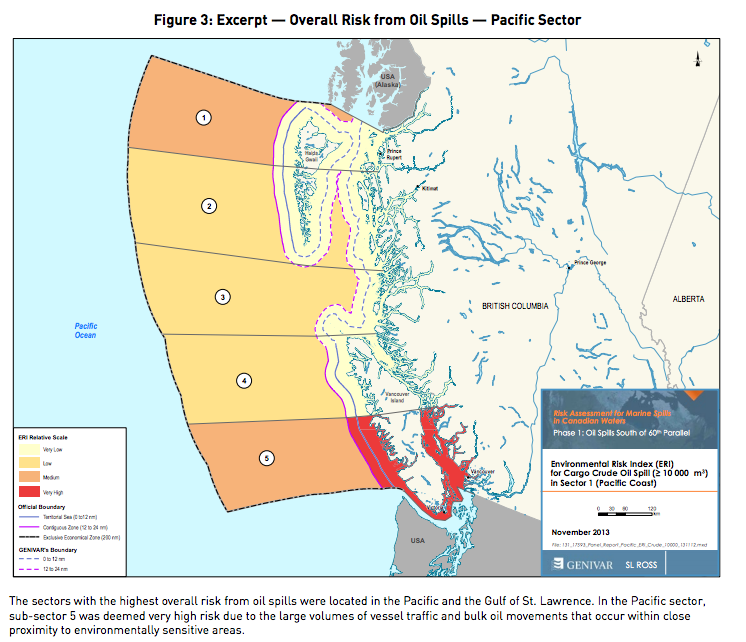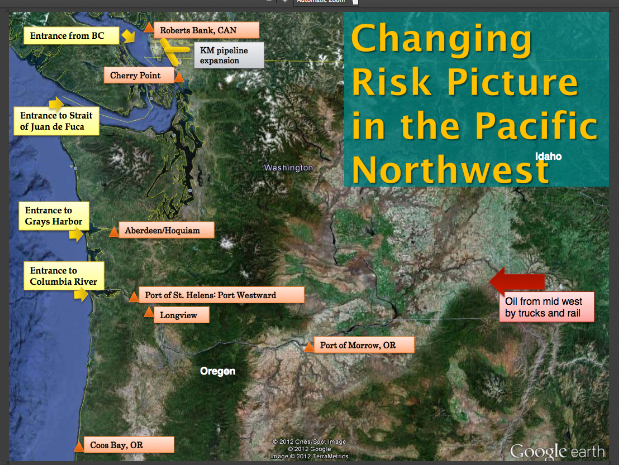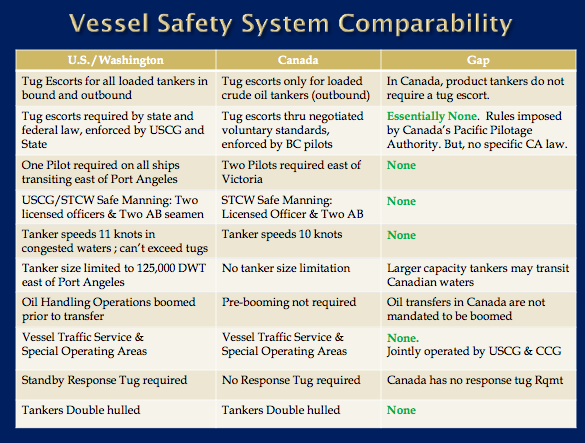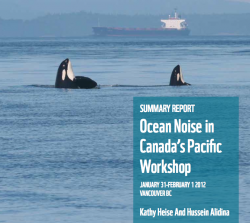 See the PDF: ocean_noise_in_canadas_pacific_workshop_2012
See the PDF: ocean_noise_in_canadas_pacific_workshop_2012
Daily Archives: November 4, 2014
Areas to Be Avoided- Why Not in Canada Also?
When we look at the protection afforded along the Rugged coast of the Olympic Peninsula, one might quite easily question why we in Canada cannot have an equivalent level of protection for our rugged and sensitive areas.
The Olympic Coast National Marine Sanctuary is one of 14 marine sanctuaries administered by the National Oceanic and Atmospheric Administration, an agency of the U.S. Department of Commerce. It includes 2,408 square nautical miles of marine waters off the rugged Olympic Peninsula coastline.
This reference provides a good explanation of the history and process of having the International Maritime Organization declare this area an ATBA, (Area To Be Avoided) Olympic Coast National Marine Sanctuary Area to be Avoided (ATBA) Education and Monitoring Program
Dave Shannon of Terrace BC has provided his notes and aid to the testimony on December 2012 which he provided as an intervenor in the cross examination in the Northern Gateway Joint review Panel.
The images below are included in the PDF:
ATBA Reference During Transcript #115 Prince Rupert Dec. 2012
Review of Canada’s Ship-Source Oil spill Preparedness and Response Regime
This report is available from the Tanker Safety Secretariat in Ottawa.
It is also included here as a PDF : transport_canada_tanker_report_accessible_eng
Changing Risk Picture in the Pacific Northwest
This report from the BC government is currently available at:
http://www.env.gov.bc.ca/eemp/symposium/pdf/changing_risk_pac_northwest.pdf
Down;loaded internal copy available here: changing_risk_pac_northwest
Two sample slides are included below:
Federal Government Technical Report Properties, Composition and Marine Spill Behaviour, Fate and Transport of Two Diluted Bitumen Products from the Canadian Oil Sands
This report is currently available at http://crrc.unh.edu/sites/crrc.unh.ed/file/1633_dilbit_technical_report_e_v2_final-s.pdf
- Like conventional crude oil, both diluted bitumen products floated on saltwater (free of sediment), even after evaporation and exposure to light and mixing with water
- When fine sediments were suspended in the saltwater, high-energy wave action mixed the sediments with the diluted bitumen, causing the mixture to sink or be dispersed as floating tarballs; The use of the term “tarball” in this report follows convention in the literature and refers to the consistency of floating, heavily-weathered oil. It does not describe the chemical composition of the product.
Internal copy of this report:1633_dilbit_technical_report_e_v2_final-s
The Gainford Study: Done at 15 degrees C??
One of the most infamous reports used by Trans Mountain Pipelines comes from the Gainford study : A Study of Fate and Behaviour of Diluted Bitumen Oils on Marine Waters: See the PDF: http-_www.transmountain.com_uploads_papers_1391734754-astudyoffateandbehaviourofdilutedbitumenoilsonmarinewater
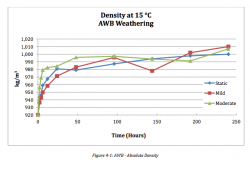 The fact that it was done under very artificial conditions has been widely criticized. For me, the fact that they used 15 degrees C was enough to make me very dubious given the fact that Strait of Juan de Fuca waters as measured at Race Rocks now for 90 years has rarely in August risen to 13 degrees C.
The fact that it was done under very artificial conditions has been widely criticized. For me, the fact that they used 15 degrees C was enough to make me very dubious given the fact that Strait of Juan de Fuca waters as measured at Race Rocks now for 90 years has rarely in August risen to 13 degrees C.
US Reference #5: Oil transportation and spill risk in Washington State
This presentation has a number of graphics which show the details of where the expected increase in tanker traffic is to come from on the NW Pacific Coast:
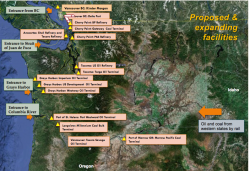
Oil transportation and spill risk in Washington State
Below are a few exampleds of the slides form that site:
US reference #4 Gateway Pacific Terminal Vessel Traffic and Risk Assessment.
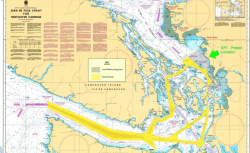 A major concern here in Metchosin is the incremental increase in Ship Traffic projected in the next few years. This reference shows the added impact from the Pacific Gateway Terminal Development.
A major concern here in Metchosin is the incremental increase in Ship Traffic projected in the next few years. This reference shows the added impact from the Pacific Gateway Terminal Development.
Reference:Gateway Pacific Terminal Vessel Traffic Assessment
Ship Noise and its Effect on Killer Whales
In April, 2014 I attended the Salish Sea Ecosystem Conference in Seattle. One of the presentations which surprized me showed the risk to the Southern resident Killer Whale populations from Noise Imapcts in the Salish Sra under Commercial shipping growth Scenarios. Following is a reference to Beam Reach which carries a summary presentation of this. — Scott Veirs, Beam Reach Marine Science & Sustainability; Val Veirs, Colorado College; Jason Wood, Sea Mammal Research Unit
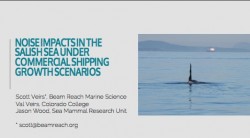 Emazing talk on fossil fuel ship noise & killer whales
Emazing talk on fossil fuel ship noise & killer whales
This afternoon I’m giving a talk at the 2014 Salish Sea Ecosystem Conference in which I present our estimates of sound pressure levels from commercial ships in Haro Strait, the core of the summertime critical habitat for the Southern Resident killer whales. I also take a first look at noise impacts of the current tanker and bulk carrier fleets and ask how those impacts may change if a suite of proposed fossil fuel export facilities are added to the Salish Sea.
– See more at: http://www.beamreach.org/2014/04/30/emaze-talk-fossil-fuel-ship-noise-killer-whales

